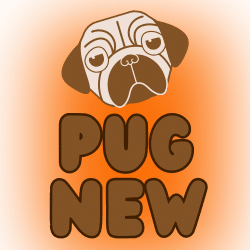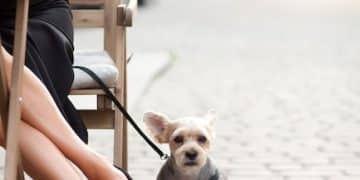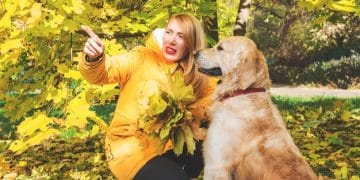Stop Jumping! A Simple Training Exercise for Polite Dog Greetings
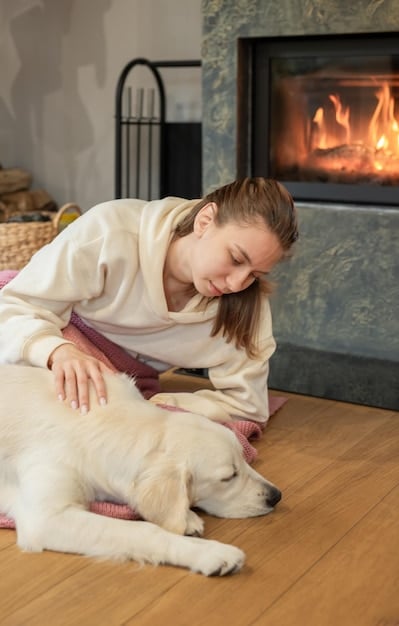
Anúncios
Teaching your dog to stop jumping on guests involves a simple, consistent training exercise focusing on rewarding calm behavior and redirecting their energy, ultimately promoting polite greetings.
Does your dog greet visitors with enthusiastic jumps? While it may seem cute, it can be overwhelming and even dangerous. Let’s explore how to stop jumping on guests: a simple training exercise to teach polite greetings.
Anúncios
Why Dogs Jump and Why It Needs to Stop
Understanding why dogs jump is the first step in addressing the behavior. It’s not always about dominance; often, it’s simply attention-seeking.
Dogs jump because it works! They’ve learned that jumping gets them attention, whether positive or negative. Even scolding can reinforce the behavior. However, this seemingly harmless habit can lead to several issues:
Anúncios
- Safety Concerns: A large dog jumping on a child or elderly person can cause injury.
- Uninvited Greetings: Not everyone appreciates a dog jumping on them, especially those with anxieties or phobias.
- Destructive Behavior: Excessive jumping can damage clothing or furniture.
Therefore, proactively addressing and redirecting this behavior is paramount for the safety and comfort of both your dog and your guests, preventing potential incidents and fostering a harmonious environment.
Setting the Stage: Management and Prevention
Before diving into training, setting up the environment is equally important. This involves preventing the unwanted behavior from happening in the first place.
Effective management plays a critical role in preventing your dog from launching into their jumping routine. Consider this as the initial step in creating a calmer atmosphere while you implement more active training.
Leash Control
Keep your dog on a leash during initial greetings. This allows you to maintain control and prevent jumping before it happens.
Designated Area
Have a designated “safe space” like a crate or bed where your dog can go when guests arrive. Offer a chew toy or treat to keep them occupied.
Management and prevention are not just about limiting your dog; they’re about setting them up for success. By controlling the environment, you minimize opportunities for jumping and reduce the likelihood of reinforcing the behavior.
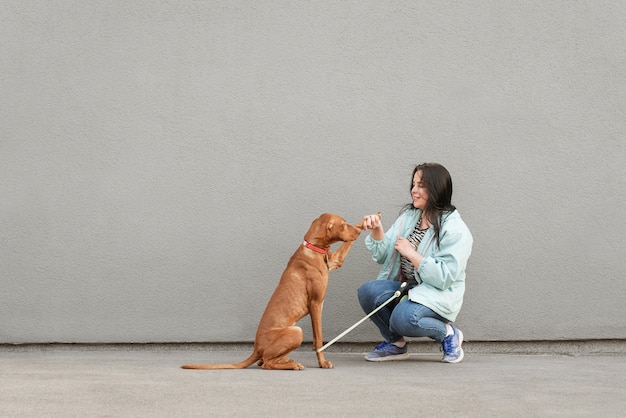
The Core Exercise: Rewarding Calm Behavior
The key to stopping jumping lies in rewarding the opposite behavior: calmness.
This core training exercise involves teaching your dog that staying on the ground and remaining calm is the key to receiving attention. It’s a shift from rewarding jumping to rewarding composure, and it requires consistency and patience.
Step-by-Step Guide
- Start with a Stranger: Have a friend or family member act as the “guest.”
- Leash Your Dog: Keep your dog on a leash to prevent jumping.
- Guest Approaching: Have the guest approach slowly.
- Reward Calmness: If your dog remains calm (no jumping, barking, or pulling), the guest should offer a treat and praise.
- Repeat: Repeat this process several times, gradually increasing the guest’s proximity.
Consistency is key. Every time a guest approaches, follow the same steps. This helps your dog learn the desired behavior and associate calm greetings with positive reinforcement.
Adding Complexity: Generalization and Distractions
Once your dog consistently performs the exercise in a controlled environment, it’s time to make things more challenging.
The goal is to ensure that your dog responds appropriately across various settings and with different distractions. Generalization involves practicing the exercise in different locations, with different people, and under varying circumstances.
Different Environments
- Outside: Practice the exercise in your yard or at a park.
- New People: Ask different friends or neighbors to act as guests.
- Varying Scenarios: Introduce distractions like toys or other dogs nearby.
Dealing with Setbacks
If your dog jumps, don’t scold or punish them. Simply reset the exercise and start again. Remember, learning takes time and patience.
By gradually increasing the complexity of the training environment, you’re preparing your dog to generalize the desired behavior across contexts, ensuring that they remain calm and polite regardless of the situation. This step is crucial for a well-behaved dog in various social settings.

Troubleshooting Common Issues
Even with consistent training, you may encounter challenges.
Addressing these hurdles requires a strategic approach. Understanding why these problems occur and how to overcome them is crucial for maintaining progress.
Excitement Overload
Some dogs get overly excited with guests, making it difficult to remain calm. Try tiring your dog out with a walk or play session before guests arrive.
Inconsistency
If some guests allow jumping while others don’t, it can confuse your dog. Explain to your guests the importance of consistent reinforcement.
Identifying these potential breakdowns in the training process can help you tailor your approach and continue moving forward. Remember, constant adaptation is often necessary for effective behavioral adjustment.
Beyond the Exercise: Long-Term Reinforcement
Training doesn’t end once your dog stops jumping. Long-term reinforcement is essential for maintaining polite greetings.
Consistent reinforcement solidifies the training and ensures that your dog continues to behave appropriately over time. It reinforces the association between calm greetings and positive outcomes.
Continued Rewards
Continue to reward calm greetings, even after your dog has mastered the exercise. This reinforces the behavior and prevents regression.
Regular Practice
Occasionally practice the exercise to keep your dog’s skills sharp. This is especially important if you don’t have frequent guests.
Sustaining the training over time helps solidify the desired behaviors in your dog’s repertoire, making polite greetings a lasting habit rather than a temporary adjustment. This is the key to long-term success and a well-mannered dog.
| Key Point | Brief Description |
|---|---|
| 🐾 Understanding the Root Cause | Dogs often jump for attention, not dominance. |
| 🏡 Management Techniques | Use leashes or designated safe spaces to prevent jumping. |
| ✅ Rewarding Calmness | Reinforce calm behaviors with treats and praise. |
| 🌍 Generalization | Practice in various environments to reinforce learning. |
Frequently Asked Questions (FAQs)
▼
The timeframe varies depending on the dog’s temperament, consistency of training, and the involvement of everyone interacting with the dog. Some may see improvement in weeks, while others may take months.
▼
Apply the same training principles. Ignore the jumping, turn away, and only give attention when all four paws are on the ground. Consistency is essential.
▼
It’s generally better to use positive reinforcement methods rather than punishment. A spray bottle might deter the behavior, but it does little to teach the dog what you want them to do instead.
▼
Yes, even small dogs jumping can be problematic. It can still be overwhelming for some people, and the behavior can escalate if not addressed early. Training smaller dogs is just as important!
▼
Politely educate your guests on your training methods and ask them to participate. Explain that ignoring the jumping and rewarding calm behavior will help the dog learn faster.
Conclusion
By understanding the reasons behind jumping and consistently applying these training techniques, you can effectively teach your dog to greet guests politely. Remember that patience, consistency, and positive reinforcement are key to success. With time and dedication, you can transform your dog’s greetings from chaotic jumps to calm, welcoming interactions.
